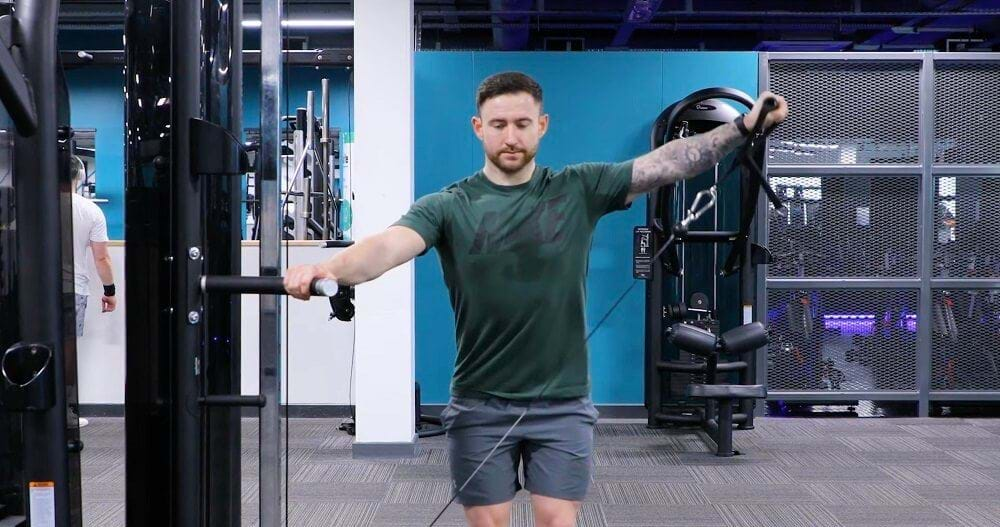Cable Lateral Raise
What Is A Cable Lateral Raise?

Cable lateral raises are a shoulder exercise that uses the gym cable machine to strengthen the lateral head of the deltoids.
The shoulder is a complex joint with a lot of mobility and is more prone to injury than other joints. The shoulders are made up of three muscles -- the anterior (front) deltoids, the lateral (side) deltoids, and the posterior (rear) deltoids. Strengthening these muscles with exercises like lateral raises, front raises and rear delt exercises helps to improve stability and reduce injury risk.
Other benefits of cable lateral raises include adding size and shape to the shoulders, and building shoulder strength, making it a versatile exercise for multiple training goals strength, muscle size, or aesthetics
All lateral raise variations are beneficial, but cable lateral raises have some unique benefits. Cable machines can make exercises more challenging as the cables provide constant tension, unlike free weights where tension can vary throughout the exercise as it relies on gravity. This can make cable variations more efficient for muscle hypertrophy and strength.
The cable machine also allows you to vary the tempo, angle, and tension to target the shoulder muscles in a different way which can improve stability further.
Cable lateral raises are an effective lateral raise exercise that can be done with a relatively light weight, making them good for beginners. Combine them with other arm and shoulder exercises like front raises, rear delt exercises, and upright rows to strengthen the entire shoulder.
Check out some other lateral raise exercises: Dumbbell Lateral Raise, Seated Lateral Raise
Commonly Asked Questions About Cable Lateral Raises
Cable lateral raises are an effective lateral raise variation that builds strength and stability in the lateral head of the shoulder muscles. Using the cable machine for lateral raises allows you to alter your hand position, use different cable attachments, and quickly change the weight during the exercise, while providing constant tension to challenge the muscles.
Cable lateral raises are considered a push exercise, because the muscle doing most of the work is the lateral deltoid of the shoulders. As a push exercise, they work well with other shoulder, chest, and triceps exercises.
Cable lateral raises offer a different type of resistance to dumbbell lateral raises. Dumbbell lateral raises offer the most resistance at the top of the movement, with little towards the bottom of the movement. Cable lateral raises provide consistent tension, with higher resistance at the beginning of the movement (when your hand is by your hip). Both variations of lateral raise are effective and can be used to build strength, size, and stability in the shoulder.
Cable Lateral Raise Tips
As you perform the lateral raise, think about keeping your little finger slightly higher than your thumb.
Keep a slight bend in your elbow to focus the work in the lateral deltoid muscle.
Avoid using momentum to swing the weight up, and return back to the start with control, to ensure the lateral delts are working.
To progress this exercise, you could do cable lateral raise drop sets.
How To Do Cable Lateral Raises
Lower the cable pulley to the lowest position on the cable machine (nearest to the floor) and attach the single hand cable attachment.
Select a low weight that offers light resistance whilst you get used to the proper technique.
Stand with the cable stack to your right, and take hold of the handle with your left hand.
Engage your core and squeeze your glutes.
Lift your left hand, keeping a slight bend in the left elbow.
Think about keeping your little finger slightly higher than your thumb to engage the lateral deltoid muscle.
Stop when your elbow is at shoulder height, pause, and slowly lower your hand to the start position.
Complete your reps on one side before repeating on the other side.
If you’re not sure if any of the above exercises are suitable for you, please consult your doctor before you start it. Need guidance on how to perform the exercise? Ask a personal trainer at your gym.